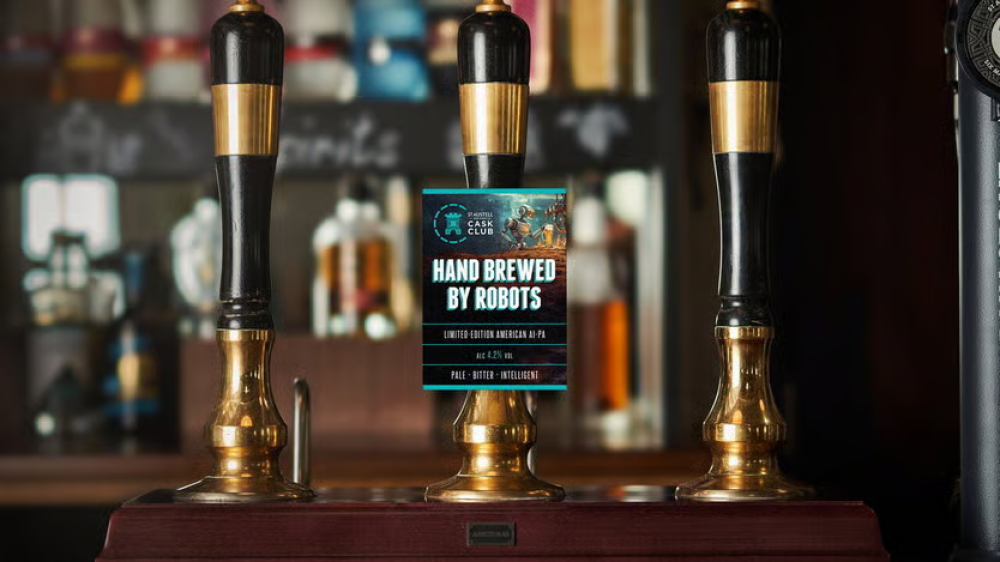
Các nhà máy bia lớn trên thế giới đang ứng dụng AI để tạo ra công thức bia mới lạ
-
Nhân dịp kỷ niệm 150 năm, Beck’s – nhà máy bia danh tiếng của Đức – đã để ChatGPT tạo công thức bia mới chỉ từ 4 nguyên liệu truyền thống: hoa bia, mạch nha, men và nước. Kết quả là Beck’s Autonomous, một loại lager ngọt nhẹ, thơm mùi hoa bia, được đánh giá cao hơn bia truyền thống.
-
Nhiều thương hiệu bia khác cũng đã nhảy vào xu hướng này:
-
Atwater Brewery (Mỹ) giới thiệu IPA vị cam chanh do AI thiết kế vào năm 2023.
-
St Austell Brewery (Anh) ra mắt bia tropical IPA “Hand Brewed by Robots” năm 2024.
-
Coedo Brewery (Nhật Bản) dùng AI phân tích sở thích theo độ tuổi và tạo ra 4 loại bia thủ công tương ứng cho độ tuổi 20, 30, 40, 50.
-
-
Theo ông Prinz Pinakatt (Tilray Brands), AI giúp tạo ra công thức bia mới lạ bằng cách phân tích nguyên liệu có sẵn, thiết bị hiện có và tinh chỉnh các yếu tố như độ ngọt, độ chua, mức độ hoa bia... để phù hợp thị hiếu người dùng.
-
Beau Warren, người sáng lập Species X Beer Project, ứng dụng AI vào việc nấu bia từ 2024, từng dùng AI đề xuất kết hợp Maris Otter malt (dùng cho stout) với syrup đường candi Bỉ trong một loại lager – điều ông "chưa bao giờ nghĩ tới". Kết quả: bia ngon vượt mong đợi và được khách đánh giá cao.
-
Dù Species X đóng cửa cuối 2024 do tài chính, các loại bia do AI sáng tạo vẫn để lại dấu ấn sâu sắc.
-
Các nhà khoa học tại KU Leuven (Bỉ) nghiên cứu 250 loại bia và dùng AI mô phỏng ảnh hưởng của các hợp chất như glycerol và acid lactic đến hương vị, giúp hiểu rõ mối liên hệ giữa hóa học và khẩu vị người tiêu dùng.
-
Tuy nhiên, các chuyên gia khẳng định: AI chỉ hỗ trợ chứ không thể thay thế hoàn toàn người nấu bia, vì quy trình vẫn cần thao tác và cảm quan của con người.
📌 Các nhà máy bia như Beck’s, Atwater hay Coedo đang sử dụng AI để tạo công thức bia mới, mang lại hương vị độc đáo và được khách hàng yêu thích. Tại Mỹ, bia AI từng được đánh giá cao hơn cả bia do con người nghĩ ra. AI giúp phân tích nguyên liệu, điều chỉnh hương vị và thậm chí mô phỏng hóa học vị giác. Tuy nhiên, quá trình nấu bia vẫn cần bàn tay và cảm nhận con người để đảm bảo chất lượng thủ công truyền thống.
https://www.economist.com/science-and-technology/2025/08/27/the-rise-of-beer-made-by-ai
The rise of beer made by AI
Customers love it
Thảo luận
Follow Us
Tin phổ biến



